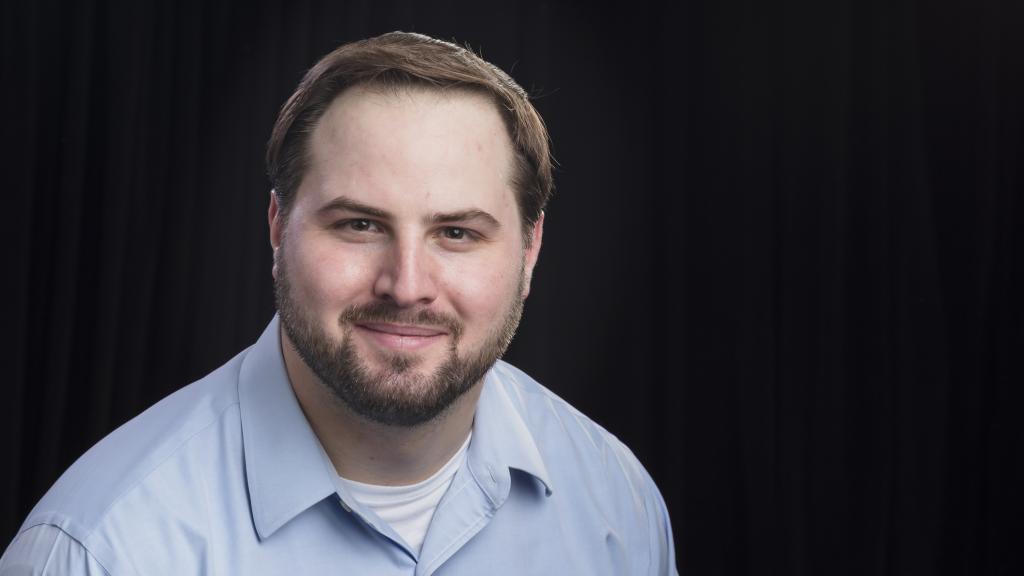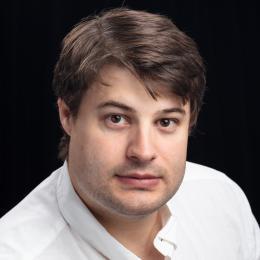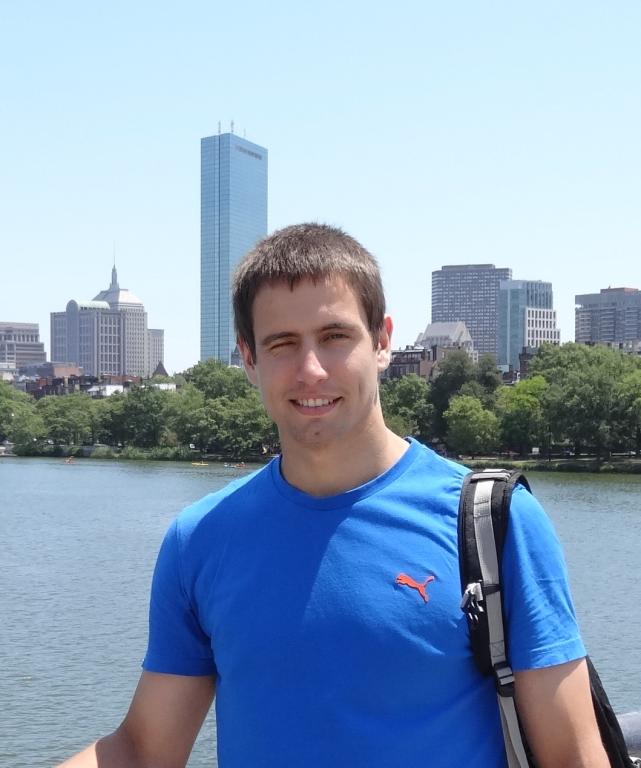The Quantum Science Center’s 2022 class of Quantum Postdoctoral Research Award, or QPRA, winners included three early career researchers at the vanguard of quantum research.
All postdoctoral researchers affiliated with the QSC, a U.S. Department of Energy National Quantum Information Science Research Center headquartered at DOE’s Oak Ridge National Laboratory, are eligible for the QPRA program, which provides additional funding to support new research activities.
Candidates propose projects that will expand the center’s research portfolio and allow them to hone their scientific capabilities and leadership skills. After receiving recommendations from a review committee led by QSC Chief Scientist Joel Moore, QSC Director Travis Humble and Workforce Development Lead Alexandra Boltasseva then select the most promising applications. QSC leadership is currently accepting applications for the QPRA class of 2023.
The 2022 awardees are now part of a prestigious group of previous QPRA winners who have enjoyed great success in the field of quantum information science, or QIS, at institutions across the country.
Now at the SLAC National Accelerator Laboratory, Noah Kurinsky received an Early Career Research Program award from DOE in 2022 to create and test more sensitive quantum sensors. His work builds on a project started with QPRA funding. Alexander Senichev of Purdue University pioneered work on intrinsic single-photon emitters in a technologically important silicon-nitride material platform, established and led the QSC’s Postdoctoral and Graduate Student Association and played an important role in organizing events such as the QSC’s first poster session and summer school. And at Los Alamos National Laboratory, Marco Cerezo is developing novel quantum algorithms aimed at solving practical tasks in near-term quantum computers.
In the following interviews, the 2022 class of QPRA winners described what drew them to quantum research and the QSC, provided advice for prospective postdocs and shared their own career aspirations.

Michael Chilcote is a postdoctoral research associate in ORNL’s Quantum Heterostructures Group. After completing a senior thesis project focused on geoplasma physics as an undergraduate student, he developed an interest in other types of physics, including condensed matter, condensed magnetism, and spintronics, or spin-based electronics, which use the spin degree of freedom present in many quantum materials to replace conventional electronics. Now, his research focuses on cultivating a better understanding of these materials and their complex properties.
What got you interested in QIS?
Chilcote: It’s been a bit of a complicated path. It’s usually a good idea to go where the excitement and the funding are, and this luckily aligned with my interests. I like working at the intersection of different subtopics of physics, including materials science and atomic, molecular and optical physics. QSC members come from backgrounds in many of these areas and in computing, and they’re able to apply that expertise to different QIS projects.
Can you summarize your QPRA research project?
Chilcote: I’m trying to confine the modes of quasiparticles called “magnons” and couple those modes with excitations present in the same material systems. The idea is that, by confining modes, we can get them to interact more strongly with materials and observe some interesting phenomena. My goal is to apply my group’s well-established expertise in quantum materials to do something new.
How has the QSC contributed to your professional development?
Chilcote: In a center this size, you get to interact with a lot of different people at different career stages whom you might never have met otherwise, from early career researchers to senior staff scientists to members of the leadership team at ORNL and at other institutions. The QSC’s workforce development initiative has been very helpful in providing mentorship to those of us just starting out.
Do you have advice for students who are hoping to follow in your footsteps?
Chilcote: It’s an interesting question, and it’s hard to answer because it depends on what works best for each individual. The focus of the QIS field might shift, and having the ability to adapt to those shifts might land you somewhere where you can work on something exciting. I didn’t expect to work in this field when I started my career, so it’s important to have an open mind and be willing to try new things.
What’s next for you?
Chilcote: I think if you were to walk around the halls of this building and ask people what they are going to be doing in 5 years or what they thought they’d be doing 5 years ago, it’s unlikely that their predictions would be accurate. I don’t know what lies ahead — priority areas for QIS might change, and the community’s interests might shift, but ultimately all I hope to be doing is finding solutions to interesting science problems that make an impact on the world.
What’s an interesting fact about you?
Chilcote: I’m a master scuba diver and have completed more than 100 dives.

Matthew Feldman, a postdoctoral research associate in the Quantum Computing and Sensing Group at ORNL, is leveraging quantum resources to develop optical quantum computers and sensors that provide improved performance over their nonquantum alternatives. These quantum resources include squeezed light, which is a quantum state in which more precise measurements are possible, and quantum entanglement, which occurs when any changes made to one of two particles also affect the other no matter where the particles are located.
What got you interested in QIS?
Feldman: I started my career as an electrical engineer. But over the years I had many captivating conversations with my father-in-law, Professor Harrison Prosper, about the peculiarities of quantum physics and the foundations of quantum mechanics and electromagnetism. My curiosity, combined with guidance and encouragement from Harrison, prompted me to seek a career in physics.
Can you summarize your QPRA research project?
Feldman: Continuous-variable quantum optical, or CVQO, systems are advantageous platforms for quantum computing because of their ability to operate at room temperature, deterministically generate entangled quantum states and implement efficient quantum-noise mitigation protocols used in variational quantum algorithms, or VQAs. A VQA evaluates a cost function for a type of quantum circuit called a “quantum gate” that is performed on a quantum computer, and then a classical computer runs an optimization to update the parameters of the gate and reduce the cost. This process is repeated until the cost is minimized, thereby determining the optimal gate parameters. Implementing a VQA on a CVQO system, also known as a “continuous-variable quantum compiler,” will enable the compilation of a target quantum gate faster than is possible when using only classical resources. In my work, I focus on the implementation of these compilers, which may be used to identify the unknown properties of a quantum material or to optimize the performance of a quantum gate.
How has the QSC contributed to your professional development?
Feldman: The QSC has provided me with funding for my research and enabled me to attend workshops and professional meetings. It has also helped me establish connections within a broad group of quantum computing and sensing researchers with diverse yet complementary skillsets. Providing this platform to jump-start a young researcher’s career is one of the QSC’s greatest strengths.
Do you have advice for students who are hoping to follow in your footsteps?
Feldman: Not all advice is broadly applicable. But what has helped me is identifying the experts in my field and working with them. Being confident and driven in my work has had a very positive effect on my career. Hard work pays off, and ultimately it is your tenacity and ability to learn from your mistakes that leads to your growth as a scientist and as a person. Take constructive criticism seriously and adjust your work accordingly to be the best scientist you can be.
What’s next for you?
Feldman: I plan to continue working in the QIS field for the long term.
What’s an interesting fact about you?
Feldman: I enjoy coaching my sons in folkstyle wrestling.

Demid Sychev, a postdoctoral research associate at core QSC partner Purdue University, studies quantum optics, which is a field that examines interactions between photons — particles of light — and other substances in their surroundings.
What got you interested in QIS?
Sychev: I’ve always been interested in quantum physics, especially entanglement because it is so unusual and completely different from anything you might see in classical physics. When I learned that people were trying to realize this behavior and study its effects by conducting experiments with physical systems, I was so impressed and wanted to get involved.
Can you summarize your QPRA research project?
Sychev: In my research project, I’m working with a solid-state single photon emitter. I’m trying to improve methods of extracting photons from the emitter because, even though it is quite robust and capable of revealing quantum properties at room temperature, it’s difficult to maintain a stream of high-quality photons. Although it’s possible to solve this problem by conducting experiments at low temperatures, I’m working on achieving the desired results by instead using a physical process called “stimulated single-photon emission.” I’m also interested in testing a process called “nonlinear optical conversion,” which involves mixing a photon with another beam in a crystal to manipulate the photon’s properties and optimize it for QIS applications.
How has the QSC contributed to your professional development?
Sychev: I’ve met many collaborators through the QSC, and it has also given me the opportunity to attend seminars and hear about new ideas and trends in the field of QIS. Receiving this award, of course, has also allowed me to pursue my research interests.
Do you have advice for students who are hoping to follow in your footsteps?
Sychev: Everyone has their own experience, and the best path to take depends on the person. But in general, participating in relevant events and collaborating or just casually interacting with quantum researchers is a great way to start pursuing an opportunity like this award. The most important thing is to try different things and set a goal to work toward once you decide what you want to do.
What’s next for you?
Sychev: I’m currently focused on finishing my project, but the results will help me think about the next step.
The QSC, a DOE National QIS Research Center led by ORNL, performs cutting-edge research at national laboratories, universities and industry partners to overcome key roadblocks in quantum state resilience, controllability and ultimately the scalability of quantum technologies. QSC researchers are designing materials that enable topological quantum computing; implementing new quantum sensors to characterize topological states and detect dark matter; and designing quantum algorithms and simulations to provide a greater understanding of quantum materials, chemistry and quantum field theories. These innovations enable the QSC to accelerate information processing, explore the previously unmeasurable and better predict quantum performance across technologies. For more information, visit qscience.org.
UT-Battelle manages ORNL for DOE’s Office of Science, the single largest supporter of basic research in the physical sciences in the United States. The Office of Science is working to address some of the most pressing challenges of our time. For more information, please visit https://energy.gov/science.



